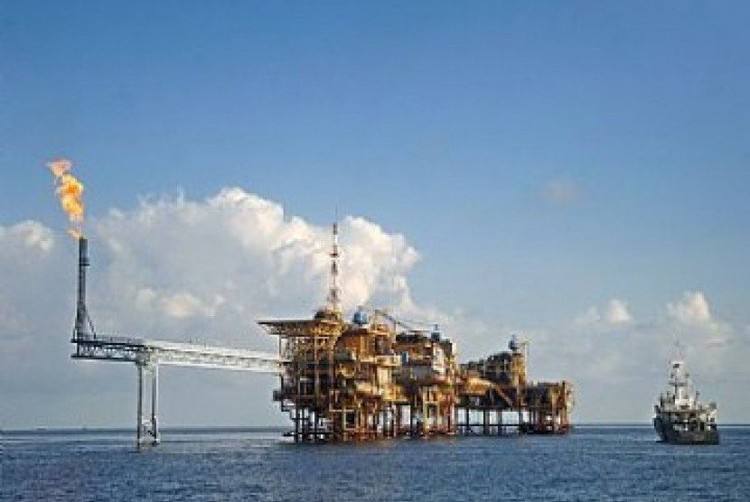Popular Reads
Top Results
Can't find what you're looking for?
View all search resultsPopular Reads
Top Results
Can't find what you're looking for?
View all search resultsIndonesia aims to double gas production by 2030 with major projects in pipeline
Change text size
Gift Premium Articles
to Anyone
I
ndonesia is aiming to double gas production over the next 10 years to 12,300 million cubic feet per day (mmscfd) as it sets sights on becoming one of the top global gas exporters with major projects in the pipeline.
The government’s Upstream Oil and Gas Regulatory Special Task Force (SKK Migas) said in a statement on March 4 that two developments last year “added optimism” to Indonesia’s goal of becoming a leading gas producer.
He was referring to the resumption of a stalled gas project at the offshore Masela Block and the discovery of a giant gas reserve at the Sakakemang Block in South Sumatra. However, major oil and gas players told The Jakarta Post that SKKMigas was still in talks with stakeholders over how to achieve the target.
In May 2019, Indonesia concluded an 18-year negotiation with Japan’s Inpex Corp over developing a liquefied natural gas (LNG) plant in Masela, which will produce 9.5 million tons of LNG each year. Four months later, Spain’s Repsol announced the discovery of an estimated 2 trillion cubic feet (tcf) gas reserve in Sakakemang – the third-largest discovery in the Asia-Pacific last year.
SKKMigas head Dwi Soetjipto said in the statement that the gas would be used “to improve the competitiveness of domestic industries and to create an opportunity for Indonesia to once again become a leading LNG supplier to the world”.
Read also: Oil and gas players dedicate 2019 for the long-haul
Boosting domestic gas production and exports is one of Indonesia’s many strategies to turn around the country’s gaping oil and gas trade deficit that remains a key vulnerability. The deficit reached $1.18 billion in January, up 2.8 times from the previous year, Statistics Indonesia (BPS) data show.
“The vision of 12,300 mmscfd by 2030 is a challenging one, and it will require considerable effort, collaboration and investment on the part of the industry and the government to achieve this,” said Gary Selbie, country manager for Premier Oil Indonesia, the country’s seventh-largest gas producer last year, on March 6.
He said industry stakeholders had conducted preliminary discussions on meeting the goal. They also planned several meetups in the coming months to create a detailed road map to help achieve the target.
Indonesian Petroleum Association (IPA) executive director Marjolijn “Meity” Wajong told the Post on March 7 that SKKMigas had not yet engaged with the IPA over the plan but that it would do so in the near future.
“Basically, we welcome the plan to increase production as long as we can figure out how to ensure good project economics,” she said.
Read also: Indonesia projects lower oil and gas production amid low investment
SKKMigas itself has an ambitious oil production target of 1 million barrels per day (bpd) by 2030. The target, which is 1.3 times bigger than last year’s production rate of 746,000 bpd, harks back to the Indonesian oil and gas industry’s golden age in the 1980s, when oil production was above 1 million bpd and the country was a member of the Organization of the Petroleum Exporting Countries (OPEC).
In comparison to the SKKMigas target, the General National Energy Planning road map – the regulatory guide for Indonesia’s energy transition – projects oil and gas production rates to reach a much lower 667 bpd and 5,808 mmscfd respectively by 2030. Last year’s production rates were higher than the two figures.
Furthermore, Energy and Mineral Resources Ministry data shows that oil and gas investments to Indonesia last year fell 7 percent short of the US$13.4 billion annual target.
Nevertheless, Indonesia is developing two new LNG facilities that will enable higher LNG exports. Aside from Inpex’s Masela plant, British Petroleum (BP) is developing the Tangguh Train 3 in West Papua, which is expected to produce 3.8 million tons of LNG each year. The two facilities would double Indonesia’s LNG production capacity to 33.1 million tons each year by 2027.
SKKMigas noted that, of the total 2,025 billion British thermal (Bbtu) units of LNG piped in Indonesia last year, 508 Bbtu was sold domestically and 1,417 Bbtu was exported, mostly to China, Japan, South Korea, Thailand and Taiwan.
“Asia is expected to remain the dominant region [for long-term LNG demand] in the decades to come, with South and Southeast Asia generating more than half of the increased demand,” Dutch energy giant Shell wrote in its latest LNG Outlook report.










